On Sunday November 11, 2018, Yenching Academy embarked on its annual week-long field study to the historic city of Xi'an, which in its heyday was the capital of the prosperous Han and Tang Dynasties. Already in its 4th iteration, this annual field study included new changes to its itinerary. This year, besides touring Xi'an and neighboring areas, scholars also visited the city of Baoji, located just west of Xi' an. This week-long field study has become an integral part of the Yenching experience, not only because it provides a prime opportunity for scholars to engage firsthand with China's culture, history, and development, but is also the only time during the year in which the entire cohort of scholars can travel and bond together.
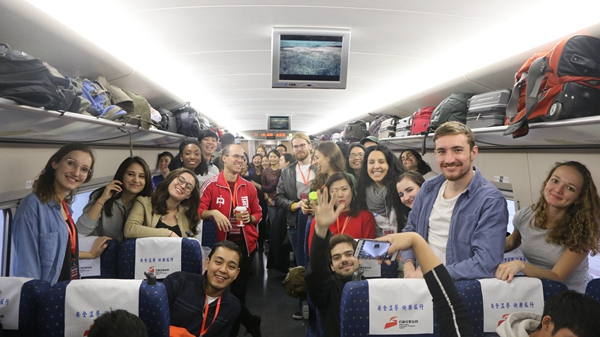
This field research was led by four professors, namely Lu Yang, Yenching Academy's Director of Graduate Studies and Professor of History at Peking University, Giuseppe Vignato , Professor at Peking University's School of Archaeology and Museology, Liu Chen, Associate Professor of Art at Peking University, and Wang Yuan, former Chief Economist of China Development Bank. Each professor delivered lectures on their topic of expertise ranging from Chinese Writing and Calligraphy to Buddhism and its development in China.
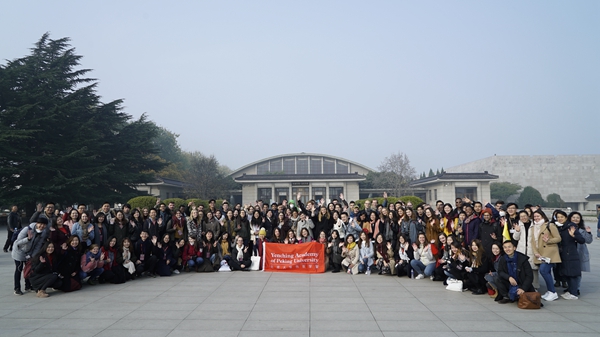
The first full day of the trip started with a bang, as scholars headed to see the famous Terracotta Warriors and Qin Shi Huang's mausoleum. At the site in which the terracotta warriors were founded, scholars learned about the powerful yet cruel emperor, Qin Shi Huang, who had commissioned this grand yet life-consuming project. As scholars toured the burial sites, tour guides explained how Qin Shi Huang's concubines were buried alive alongside him. In fear of ceding any power to an empress, Qin Shi Huang did not marry and died wifeless. For 4th cohort scholar Michael Chen, “The terra cotta warriors, among other mausoleums, struck at one of humankind's core tensions – the incredible creativity and cruelty of our ancestors.” On the other hand, what was more evident to 4th cohort scholar Sosan Afghan was the way in which artwork could out-live its creators: “I realized that even though the artists' names of the terracotta soldiers were not mentioned, that even after we die, our art will live on and have its own identity, which I find very beautiful.”
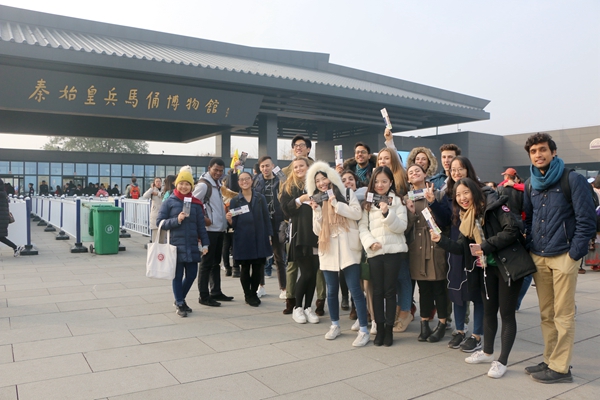
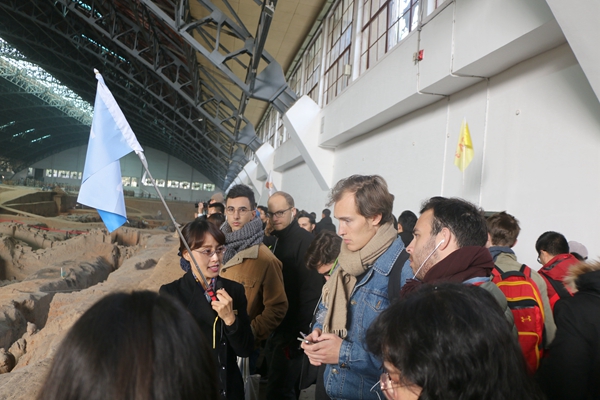
The first full day at Xi' an ended with a playful and humorous performance called Laoqiang, a traditional musical artform, also better known as one of the oldest forms of rock and roll in China. This dying artform faced extinction in the last century but has since been revived by UNESCO when it was listed as an intangible cultural asset in 2006. After the performance, scholars had the chance to try their hand at playing the traditional Chinese instruments, from the two-string bowed instrument to the loquat.
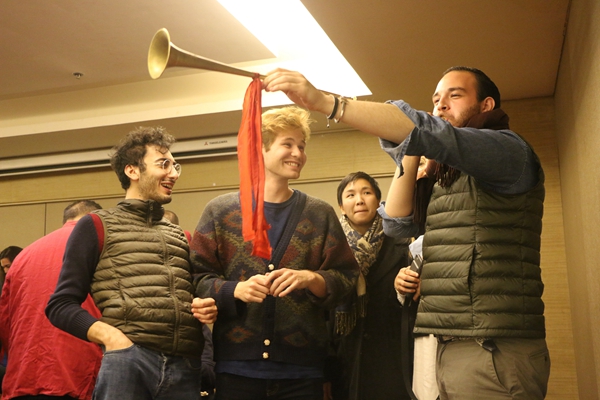
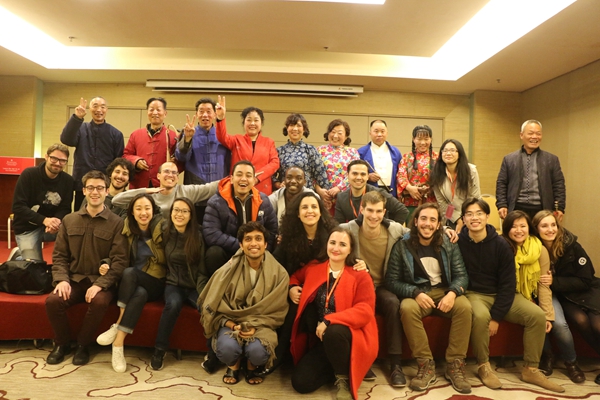
On the second day, Yenching scholars had a lecture by Mr. Cheng Yongxu, the President of the Shaanxi Branch of China Development Bank on development finance. After the lecture, scholars paid a visit to Xi' an's Metro depot, where scholars learned about the gradually expanding subway system. The subway network currently has three lines, with line 2 being used by the greatest volume of passengers. Line 2 is the north south line of the city that runs under Xi'an's bell tower whereas line 1 cuts east and west and line 3 moves diagonally from the Northeast corner to the Southeast corner of the city. As scholars examined the subway map, it became evident that the slow development of the subway network can be accounted to the considerations that must be made to accommodate the existing infrastructure of the ancient city. 4th cohort scholar Wang Xin commented, “What's interesting to see is the balance of economic development and maintenance of historical sites. There seems to be obvious trade-offs for maintaining old sites and building new sites. For example, I read online that within the city walls, no building can be taller than the city walls. 2nd and 3rd ring roads had to make several accommodations to the existing rules, so with the limit of height for buildings, it could also limit the economic construction here."
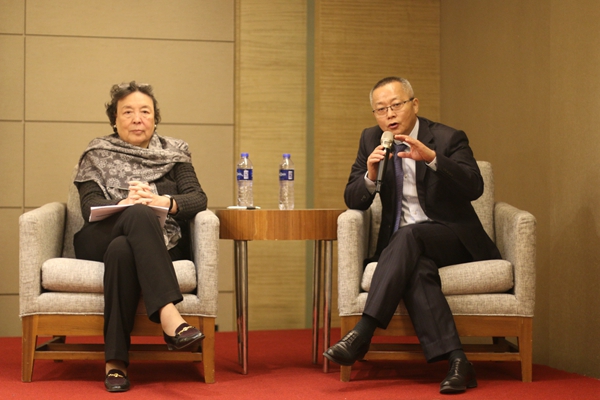
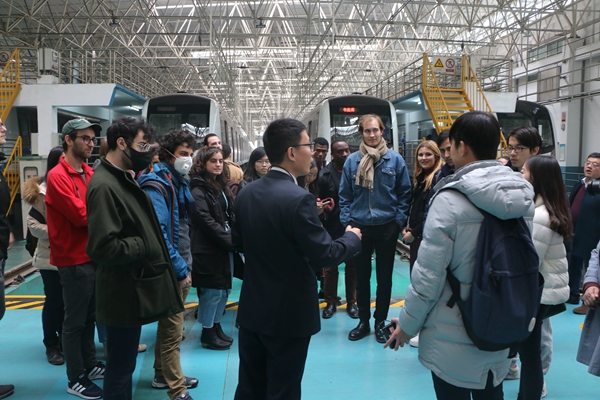
On the third day, scholars visited the Beilin Forest of Steles, a site that received the most number of positive reviews from scholars. 4th cohort scholar Dev Lewis commented, “For me the Stele museum had a bigger impact on me than the Terracotta warriors and is a place I would definitely come back to. From recording names of key officials, accounts of battle victories, to standardized Chinese scripts, all these records ensured that historical memory is preserved and that knowledge is transferred across generations.” Whereas Wang Xin explained, “I really liked Beilin forest of Steles because it really echoed with what we learned from primary school in China, which would be the equivalent of seeing the hand scripts of Shakespeare. So we could really see the role that cultural heritage is playing in education, tourism, and city image building. I remember one piece at the site called 圣教序 that was written by a monk. We could see from this single piece of art that culture, religion, and art were all involved.”
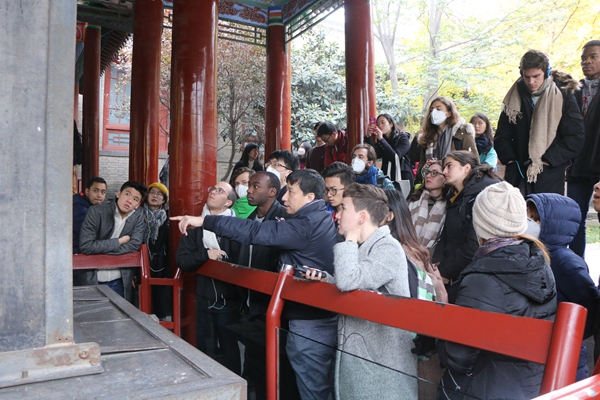
Among the historic sites, the Qianling Mausoleum inspired a complex mixture of fear and respect. Upon arrival, the grounds of the Qianling Mausoleum were shrouded in an impenetrable fog. Some would say that this decreased visibility only added to the mystery of this centuries old burial ground of Tang royalty. However, scholars did not cave in fear, rather boldly descended into the meters-deep tunnel that led to the resting place of Emperor Wu Zetian's granddaughter, Princess Yongtai. Along the descent, ceramic statues that were found in the original burial ground were displayed in the hall. With each meter, the altitude decreased rapidly, quickly bringing the scholars into the hushed depths of the tomb. At the end of the tunnel laid the body of the deceased within a black stone sarcophagus, which was engraved with exquisite carvings. As scholars inspected the details of the sarcophagus, Professor Lu Yang explained the history of the deceased. He explained that within the tomb laid the granddaughter of the only female Emperor of China, Wu Zetian. In retaliation to her granddaughter's censure, Wu Zetian pressured her granddaughter to commit suicide. However, later finding out about the true story behind the granddaughter's death, officials posthumously commemorated her life, burying her within a well-decorated tomb where the ceiling replicated that of a starry night.
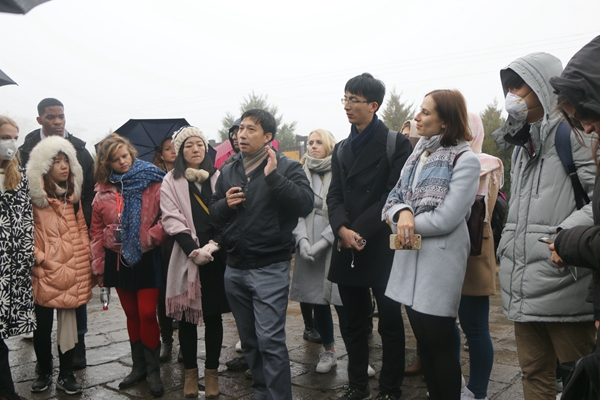
Following the mausoleum of her granddaughter, scholars paid a visit to the resting place of the formidable grandmother and Emperor, Wu Zetian. Walking through the shrouded mist, Professor Lu explained how Wu Zetian had entered the imperial court as a young concubine serving the elder emperor, later married the emperor's son, and then usurped the throne after her husband had passed away. While her ascent to power had its fair share of controversy, her position as the only female Emperor of China is regarded with reverence.
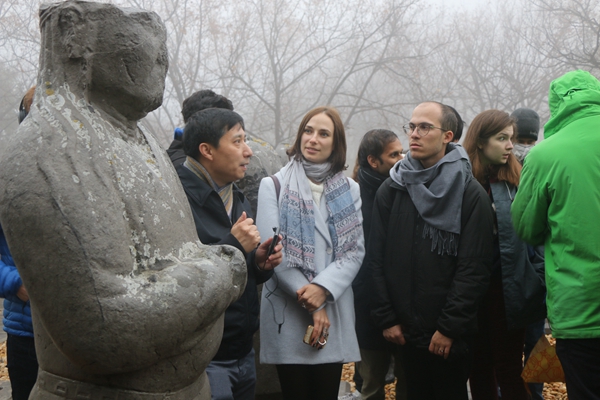
On Thursday afternoon, scholars and professors took an hour long bus ride to visit the famous Shuilu temple, located around 37 miles outside of Xi'an city, which is known for its more than 3,700 clay Buddha sculptures that hang delicately on the walls of the centuries old temple. The temple is also known to be “The Second Dunhuang in China”. It was first built in the Sui Dynasty and was further developed during the Ming and Tang Dynasties when more sculptures were added. The sculptures on the Northern and Southern walls of the temple illustrate the entire life of Sakayamuni. Depicted as sitting on cloud sculptures, the figures of Confucius, Sakayamuni, and Laotze, represent the fusion of Confucianism, Buddhism, and Taoism in China.
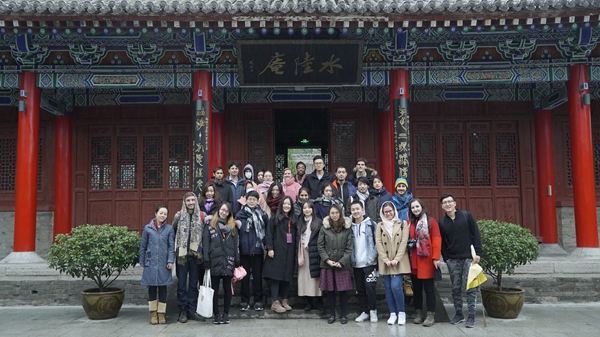
For Federico Verly, a scholar from Argentina, the fusion of these three religions in China was remarkable. "One of the things I liked the most, was at the Buddhist Temple. I found it interesting to see the number of different religions depicted in the temple. The three different religions are all present: the statues showing Daoism, Confucianism, and Buddhism. Together they become something unique. It is interesting to see how these religions adapt and how the ones that appear later had to adapt to the earlier ones, and how they all survived without any clashes, or at least not in the same way that other religions have clashed in other parts of the world."
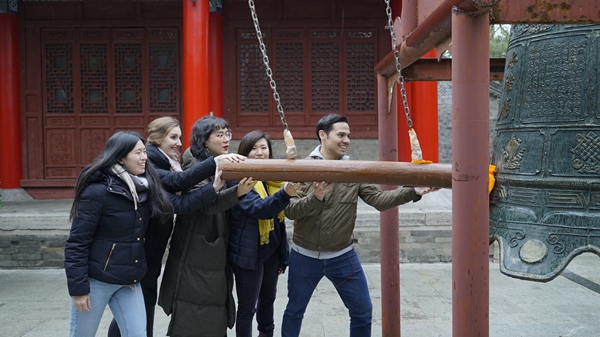
That same evening, Yenching scholars had the opportunity to enjoy Chinese shadow puppetry, which was inscribed on the representative list of Intangible Cultural Heritage of Humanity by UNESCO in 2011. The evening performance began with traditional puppet theatre where performers used puppets, rod, strings, and gloves to tell stories. The following act of Chinese shadow puppetry sent the audience into fits of laughter. Onstage, the performers hid behind a translucent cloth screen on which they used rods to manipulate colorful silhouette figures made of paper. Illuminated from behind, the screen depicted moving figures accompanied by music. Shortly after the performance, scholars came onstage to play with the puppets themselves. Trying their hand at manipulating the silhouette figures, scholars replicated the playful performances on the translucent screen. Engaging in Chinese shadow puppetry was a special experience for scholars especially when this traditional art form is facing extinction.
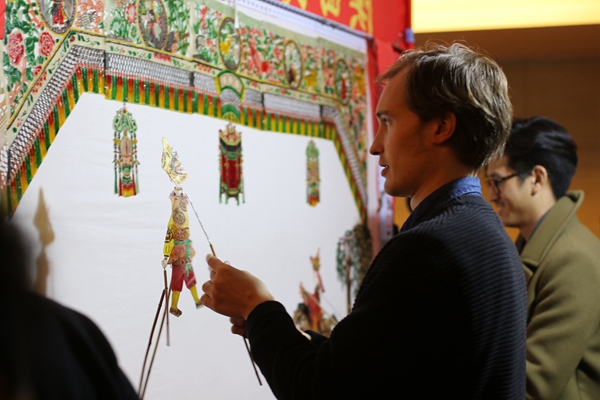
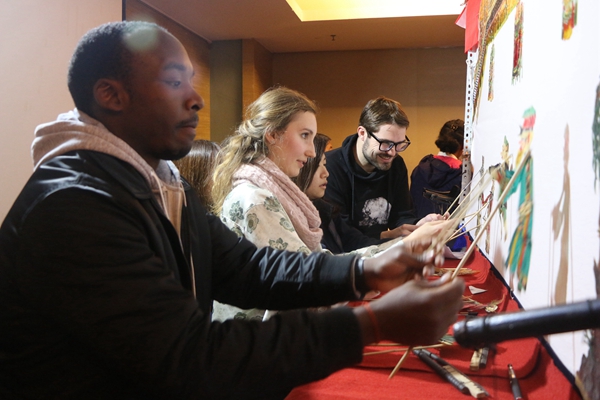
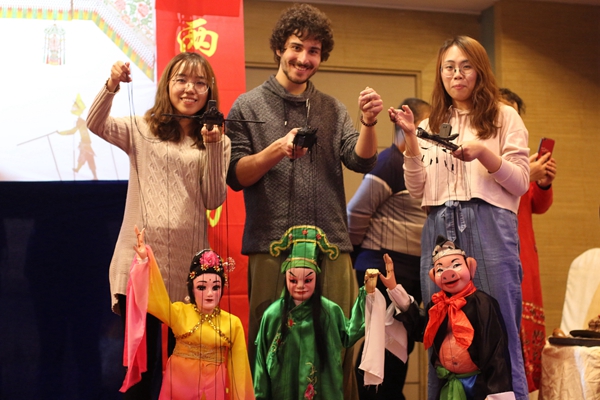
On Friday morning, Yenching embarked on their journey towards the neighboring city west of Xi' an: Baoji. Their first stop along the route was at Famen Temple, a Buddhist temple with Buddhist relics and the remaining bones of Buddha's fingers. According to Dev Lewis, “The Famen temple visit was a highlight for me because of the so called Buddha relics. The relics played such an outsized role in the spread of Buddhism and a source of legitimism for rulers and monks. Battles have been fought to gain possession of these relics, and tracing its path tells a lot about the history and civilizations in Asia.”
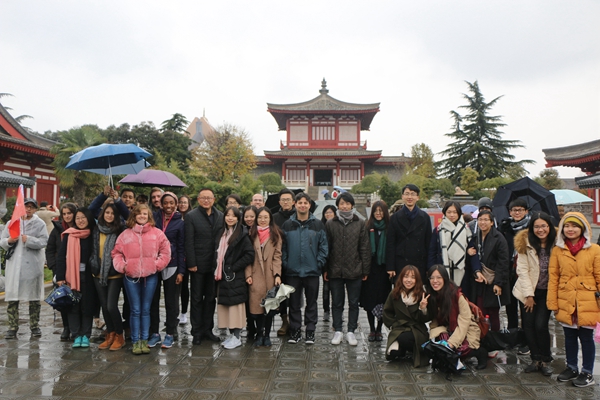
In the afternoon, Yenching made their way to the Tomb of Duke Jin of Qin, whose burial grounds were discovered alongside all the remnants of the servants whom were buried alive. The burial practices exemplified by this Tomb spoke to the cruel and backward practices held by pre-Qin dynasties, that were later partially overturned by Qin Shi Huang. After this formidable historic site, Yenching made the rest of the journey into the city of Baoji, where scholars enjoyed a traditional Shaanxi dinner complete with Biang Biang noodles among other Shaanxi specialties.
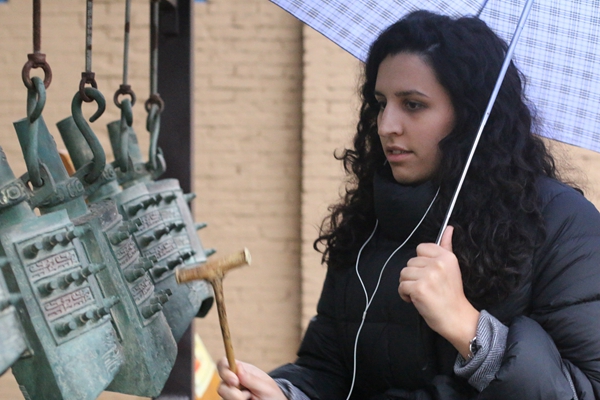
The final day of the field study began with a visit to Baoji's Bronzeware Museum, an archaeology museum that contains more than 120,000 pieces of cultural relics, most of which were made during the Zhou dynasty. For Michael Chen, “The astounding creativity and attention to detail displayed in the bronzewares and celadon pieces are stunning in their pursuit of the aesthetic. Though standards of beauty are no more static than Chinese culture, what is clear is that we as humans are always pursuing some form of aesthetic.”
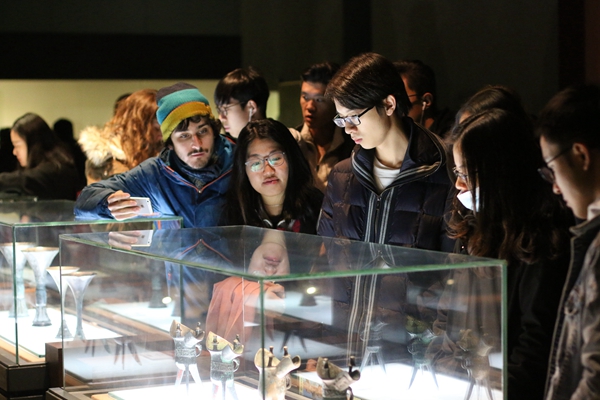
After a week-long tour of one of China's richest cultural cities, Yenching scholars returned home to Peking University with much to reflect on. While the cultural and historic sites were the main attraction of the tour, other aspects of Xi'an that were not scheduled into the itinerary played an important role in facilitating new discoveries. For Cao Mengyao, the Muslim Food Street of Xi'an was a site for new exploration: “I went to the Muslim Food street every night when we were in Xi'an. There, my friends and I tasted over 10 kinds of food and snacks. I especially enjoyed biang biang mian and rou jia mou. The most special thing about the food in Xi'an is that they are all home-made. In Xi'an's Muslim Food street, each shop is different from the next and people are very friendly. I felt that people in Xi'an were friendlier and more inclined to share their stories.” Similarly for Lulu Zhang, “One of my favorite parts of the trip was visiting the Muslim Street and the nearby mosque. The night market was bustling and lively, with unique shops selling deep fried street food, sweets, scarves, tea sets, and more. I enjoyed seeing the open celebration of culture and religion as well as the beautiful architecture and serenity at the mosque.”
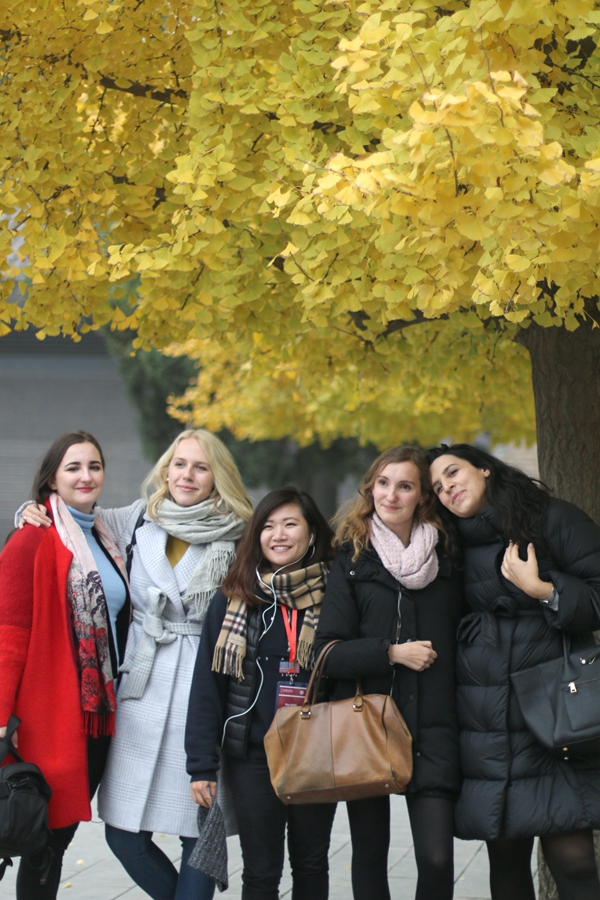
Having gained a deeper understanding of China's rich history and culture, scholars will be able to relate what they experienced firsthand in Xi'an to their studies in class. Whether that is studying Art history or urban development, this field study has been fruitful in enabling academic and abstract ideas come to life.